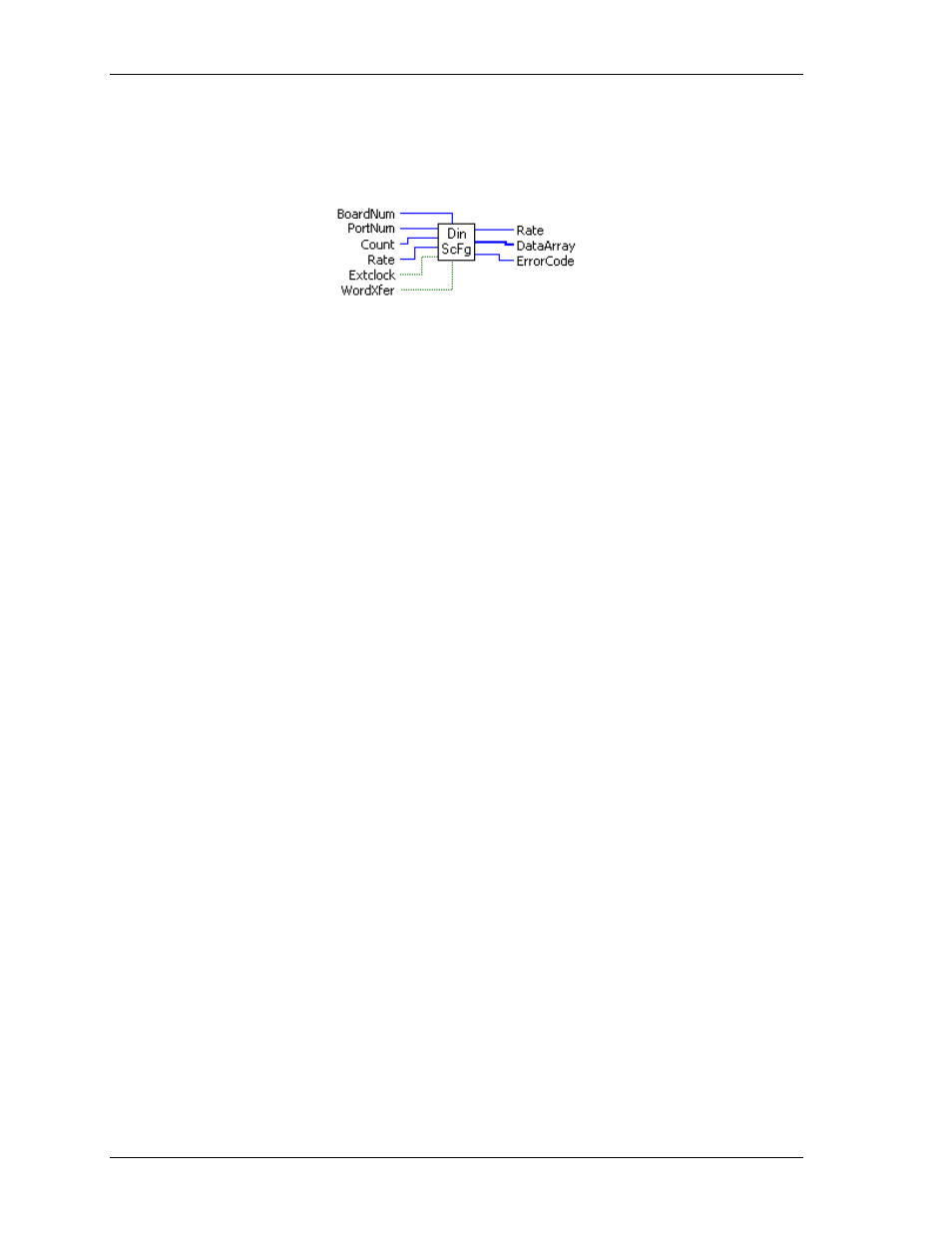Dinscfg.vi – Measurement Computing UL for NI LabVIEW User Manual
Page 78

Universal Library Virtual Instruments (VIs)
Digital I/O VIs
DInScFg.VI
Multiple reads of digital input port of a high-speed digital port on a board with a pacer clock such as the CIO-
PDMA16. The DInScFg.VI will not return to your program until all of the requested data has been collected
and returned to input array.
Inputs:
BoardNum
[U32] - The board number assigned when installed with InstaCal. Can
be 0 to 100.
PortNum
[I32] - Specifies the digital I/O port to read.
Count
[I32] - Number of times to read digital input
Rate
[I32]- Number of times per second (Hz) to read
ExtClock
[TF] - External or internal clock
WordXfer
[TF] - Word or byte transfer
Outputs:
Rate
[I32] - Actual rate returned here
DataArray
[I16] - Data from scan is returned here
ErrCode
[I32] - Error code. See ErrMsg.VI
Arguments:
BoardNum
The board number associated when it was installed with InstaCal.
PortNum
If the port type is not
AUXPORT
, the specified port must be configured for input.
For many boards, AUXPORT is not configurable. However, some later boards do
require that the AUXPORT be configured using DCfgPort.VI or DCfgBit.VI.
Please see board details for more information.
Count
The number of times to read digital input
Rate
Number of times per second (Hz) to read the port. The actual sampling rate in
some cases will vary a small amount from the requested rate. The actual rate will
be returned to the
Rate
argument.
ExtClock
If this option (True) is used, transfers are controlled by the signal on the trigger
input line, rather than by the internal pacer clock. Each transfer is triggered on the
appropriate edge of the trigger input signal. When this option is used the
Rate
argument is ignored. The transfer rate is dependent on the trigger signal. The
default is
TIMED
(False).
WordXfer
Normally, this VI reads a single (byte) port (default is False). If
WORDXFER
is
specified (True), it will read two adjacent ports on each read and store the value of
both ports together as the low and high byte of a single array element in
DataArray
[].
Rate
(output)
Actual input rate in samples per second.
DataArray
Data from the scan is returned here.
ErrCode
Error code returned from the Universal Library. Zero if no error occurred. Use the
ErrMsg VI to convert
ErrCode
into a readable string.
78
